

| Ten common Nottinghamshire moths by month |
| September |
| September sees the start of a
decline in both the number of species and number of
actual moths on the wing. It also marks the transition of
Summer into Autumn and while the range of species begins
to show signs of decline, the new moths appearing often
take on a more colourful note. A selection of orange, yellow and pink coloured Sallows start flying and often arrive to MV light in numbers at woodland sites, but they do occur in suburban areas. |
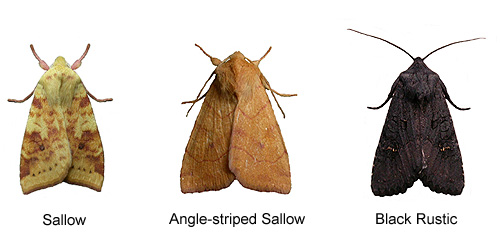 |
|
| .... | ||
| September is also the
month when a watch should be kept for suitable weather
conditions, condusive to migrant moths reaching the UK.
Peak numbers of Hummingbird Hawk-moth and Silver Y, which
arrived earlier in the Summer, will be found nectaring at
the flowers of Valerian as they start to return south. Below are the ten species most likely to be seen in Nottinghamshire during the month, followed by just some of the species which can also be expected. |
||
| 45.044 .... B&F 1524 .... Emmelina monodactyla (Linnaeus, 1758) |
||
| Status .....Common throughout much of Nottinghamshire, where it is regularly found by day resting on fences. Uncommon around the Sherwood Forest NNR. | ||
| .... | ||
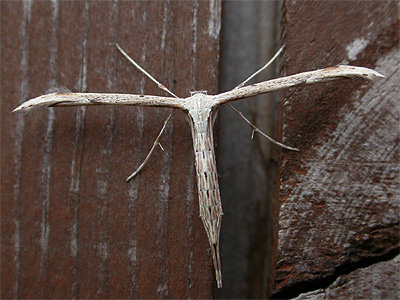 |
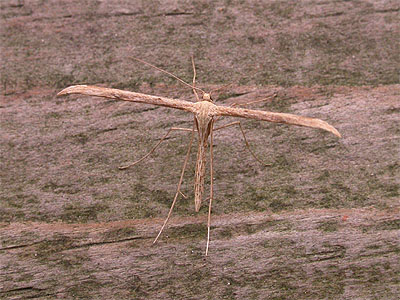 |
|
| 70.095 .... B&F 1760 .... Red-green Carpet Chloroclysta siterata (Hufnagel,
1767) |
||
| Status .....Generally quite a common moth at many sites. Away from the Trent Valley, Red-green Carpet is much more numerous and readily attracted to MV light. | ||
| ..... | ||
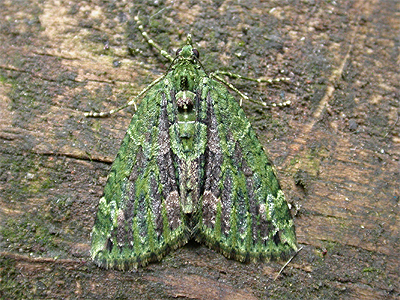 |
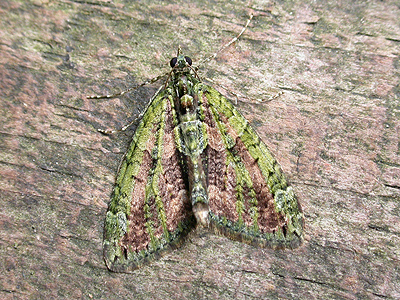 |
|
| 70.097 .... B&F 1764 .... Common Marbled Carpet Dysstroma truncata (Hufnagel, 1767) ....... Formerly known as Chloroclysta truncata |
||
| Status .....An often very common moth, which often shows considerable variation in markings and colouration. Seems to be either totally absent or scarce, south-east of the River Trent. | ||
| ... | ||
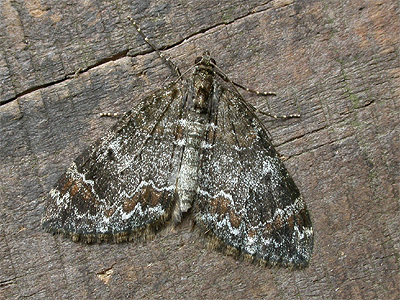 |
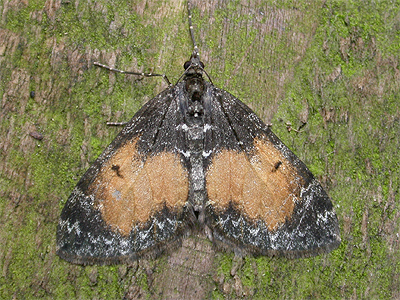 |
|
| 70.234 .... B&F 1913 .... Canary-shouldered
Thorn Ennomos alniaria (Linnaeus, 1758) |
||
| Status ..... Frequent at MV light traps operated within the Sherwood Forest area and also common around the Idle Valley NR. There are scattered records from sites around most areas of Nottinghamshire. | ||
| .... | ||
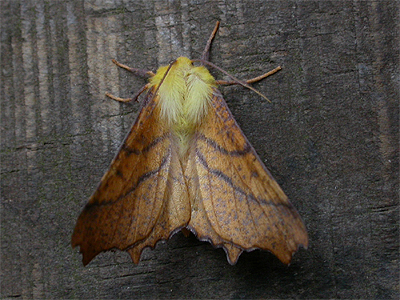 |
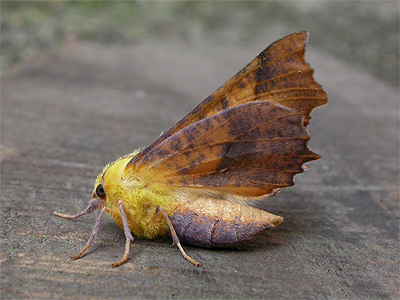 |
|
| 73.107 .... B&F 2300 .... Old Lady Mormo
maura (Linnaeus, 1758) |
||
| Status .....This large and distinctive moth, is often a regular visitor to MV light traps operated in urban areas. In Nottinghamshire, the majority of records come from the south of the county and it seems uncommon north of Mansfield. | ||
| ...... | ||
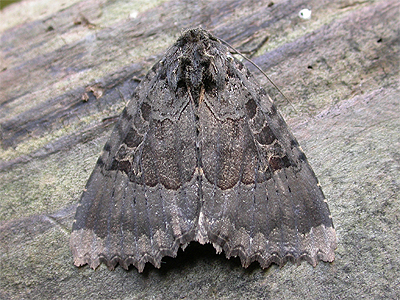 |
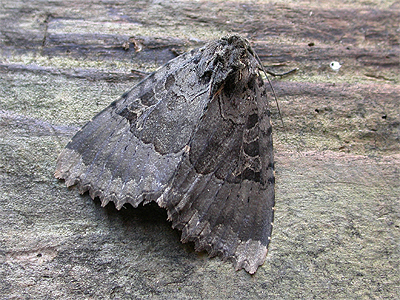 |
|
| 73.181 .... B&F 2273 .... Pink-barred Sallow Xanthia togata (Esper, 1788) |
||
| Status .....Most of the Sallow moths (Xanthia, or formerly Xanthia species) are common in Nottinghamshire and with much the same range as each other. All seem to be commoner in woodlands north-east of Mansfield. Frequently recorded from the Idle Valley NR. | ||
| ...... | ||
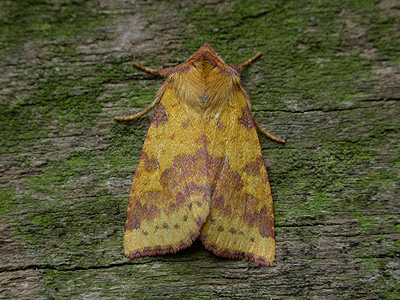 |
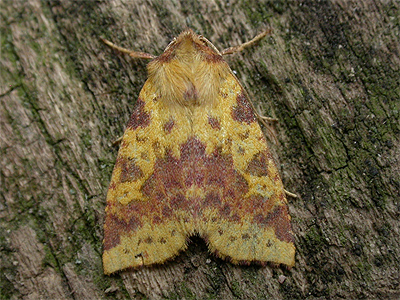 |
|
| 73.182 .... B&F 2274 .... Sallow Cirrhia
icteritia (Hufnagel, 1766) .... Formerly known as Xanthia
icteritia |
||
| Status .....Fairly regular to MV at Sherwood Forest and the Idle Valley NR. Most of the Sallow moths (Xanthia, or formerly Xanthia species) are common in Nottinghamshire and with much the same range as each other. All seem to be commoner in woodlands north-east of Mansfield. | ||
| .... | ||
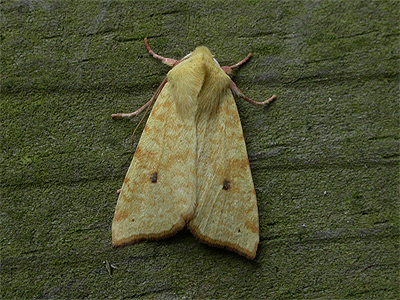 |
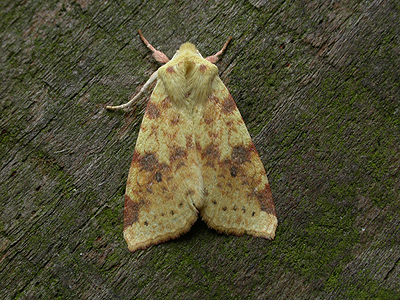 |
|
| 73.190 .... B&F 2264 .... Yellow-line Quaker Agrochola macilenta
(Hübner, 1809) |
||
| Status .....Common over most of north Nottinghamshire, but this moth seems to be surprisingly absent where it may be expected to occur. | ||
| .... | ||
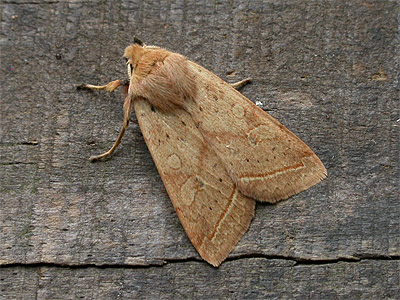 |
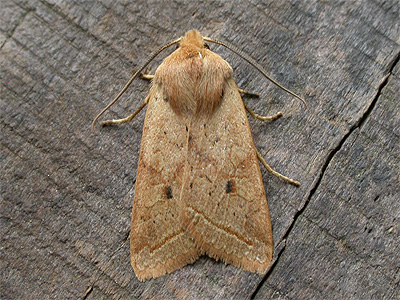 |
|
| 73.219 .... B&F 2269 .... Centre-barred Sallow Atethmia centrago (Haworth, 1809) |
||
| Status .....Often regular at MV light. A less common moth at Sherwood Forest than at Eakring, usually preferring more mixed woodland when it can occur at light traps in good numbers. There seem to be few records from the south-east of Nottinghamshire. | ||
| .... | ||
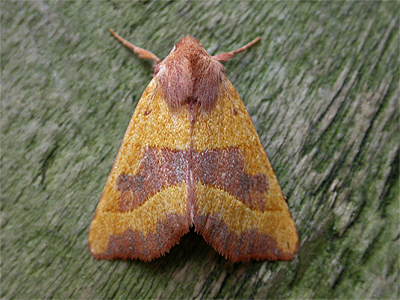 |
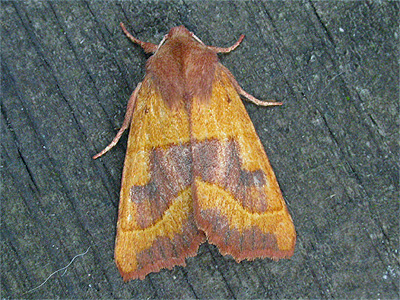 |
|
| 73.233 .... B&F 2232 .... Black Rustic Aporophyla nigra (Haworth, 1809) |
||
| Status .....Possibly quite common, but there seems to be a distinctly westerly-bias to Nottinghamshire records. | ||
| . | ||
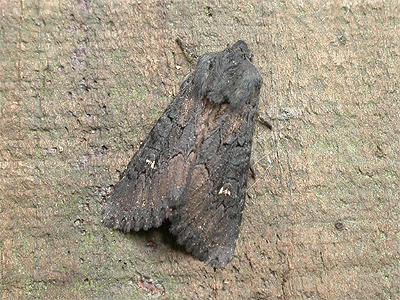 |
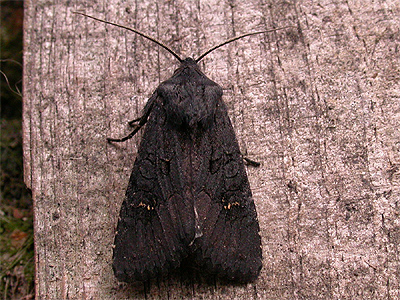 |
|
| Can't find your moth? Some other moths often recorded at MV light during September |
| .... |
| The following moths are also likely to occur during the month, although some may be more habitat specific and less likely to be recorded from suburban gardens. |
| .... |
| Common moths often recorded during the day |
| ..... |
| The following moths are often encountered during daylight hours. September offers the best month for seeing Hummingbird Hawk-moths in favourable years, which are greatly attracted to the flowers of Valerian, which will also attract numbers of Silver Y at dusk. |
| ..... |